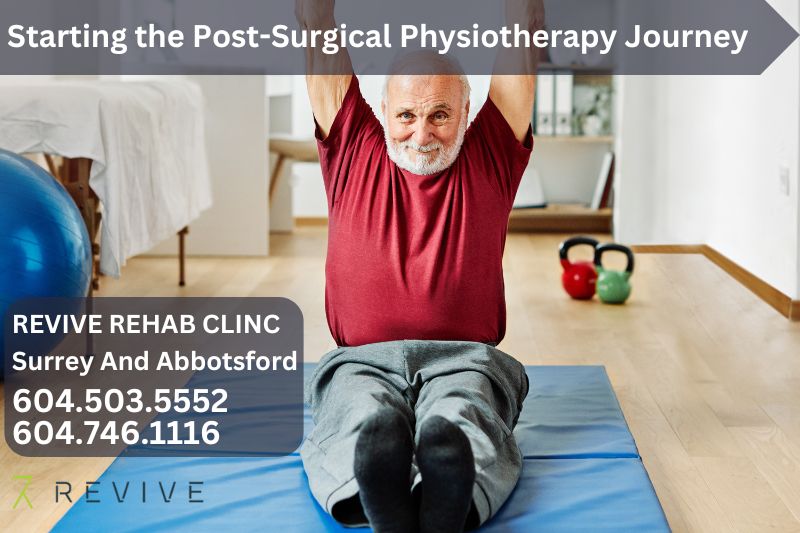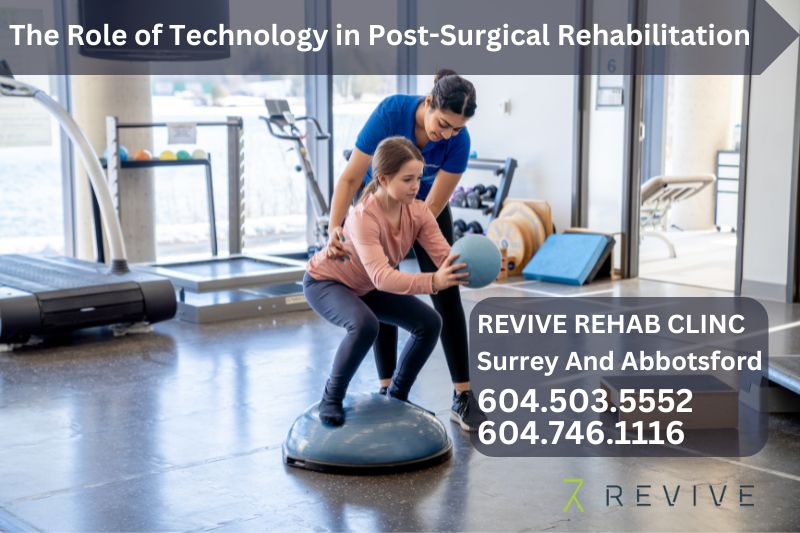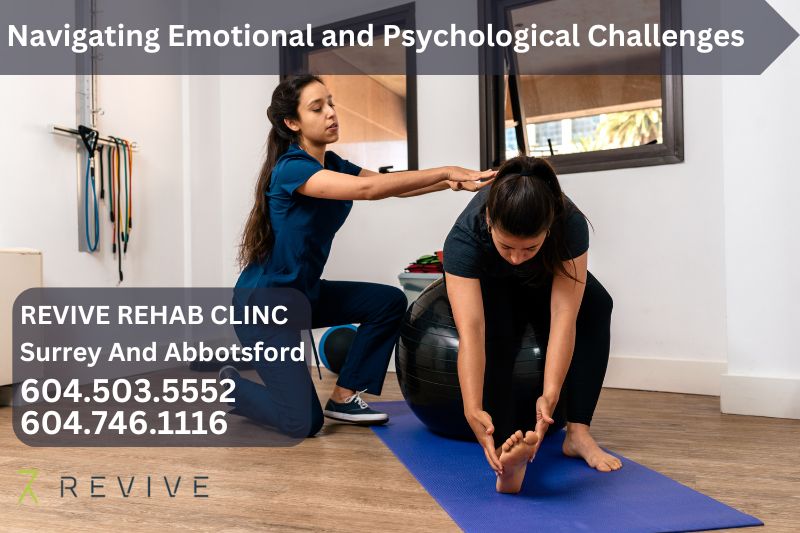The Quintessential Guide to Post-Surgical Rehabilitation with Physiotherapy

The Role of Physiotherapy in Post-Surgical Rehabilitation: Insights from Surrey Professionals
Undergoing surgery is a significant physical and emotional milestone. However, the real work begins post-operatively, where rehabilitation becomes critical to restoring health and function. While people vary in their surgical experiences, one aspect that remains consistently crucial is the role of physiotherapy in the recovery process.
This comprehensive Guide to Post-Surgical Rehabilitation, brought to you by our physiotherapy professionals in Surrey, explores how physiotherapy plays a pivotal role in post-surgical rehabilitation, ensuring a smoother path to recovery and an improved overall quality of life.
Understanding the Post-Surgical Landscape
The post-surgical period is a unique context demanding tailored rehabilitation approaches. Guide to Post-Surgical Rehabilitation involves healing from the scalpel’s immediate effects and secondary consequences, such as immobilization, pain, and disuse of muscles and joints. This often leads to a decline in overall physical capabilities, creating a need for customized recovery strategies.
Physiotherapy, in this regard, is not merely a set of exercises but a systematic approach to re-establishing functional movement patterns, reducing pain, and promoting healing. Post-surgical patients find themselves in the hands of empathetic and experienced Surrey physiotherapy professionals who recognize that every surgical intervention, whether orthopedic, cardiac, or neurological, demands specialized rehabilitation protocols.

Starting the Post-Surgical Physiotherapy Journey
The Initial Assessment
The post-surgical rehabilitation process typically commences with a comprehensive assessment. Here, the physiotherapist evaluates the patient’s current state, noting any functional limitations, pain levels, and specific challenges related to the surgical procedure. The assessment is an interactive process, as patients are encouraged to share their experiences and goals, which are then integrated into the rehabilitation plan.
Developing a Custom Rehabilitation Plan
Based on the initial assessment, a tailored rehabilitation plan is designed to meet the patient’s needs. This plan considers the type of surgery performed, the patient’s age, baseline physical condition, and desired level of function. In Surrey, physiotherapists work closely with the surgical team, ensuring the program aligns with the surgeon’s post-operative recommendations.
Setting Realistic Recovery Goals: Guide to Post-Surgical Rehabilitation
Realistic and measurable recovery goals help patients stay motivated throughout their rehabilitation. Whether regaining strength, improving mobility, or returning to a specific activity, setting targets creates a roadmap for progress. Involving the patient in goal-setting empowers them to participate actively in their recovery.

The Essential Elements of Post-Surgical Physiotherapy
1. Exercise Therapy
Prescribed exercises are a core component of post-op physiotherapy service. These target specific muscle groups and movement patterns to improve strength, flexibility, and endurance. In Surrey, patients benefit from various exercise approaches, including manual therapy, clinical Pilates, and hydrotherapy.
2. Manual Therapy
Hands-on techniques, including soft tissue massage, joint mobilization, and manipulation, alleviate pain and improve joint mobility. Manual therapy is particularly effective in conditions such as frozen shoulder and back pain treatment and following orthopedic procedures.
3. Balance and Proprioception Training
Maintaining balance and proprioception (awareness of the body’s position in space) is crucial post-surgery to prevent falls and avoid injuries. Our physiotherapists Abbotsford, help patients redevelop these vital skills through specific exercises and activities by following this Guide to Post-Surgical Rehabilitation.
4. Neuromuscular Re-education
Surgery can disrupt the body’s standard movement patterns. Neuromuscular re-education techniques, such as biofeedback and proprioceptive neuromuscular facilitation (PNF), retrain the brain and muscles to work harmoniously, restoring normal function.
5. Pain Management Strategies
Effective pain management is an integral part of the Guide to Post-Surgical Rehabilitation. Physiotherapists in Surrey apply various techniques to control pain, such as heat and cold therapy, TENS (transcutaneous electrical nerve stimulation), massage therapy, and desensitization exercises.
6. Education and Lifestyle Modification
Educating patients about their surgery, rehabilitation process, and preventative measures is critical to successful recovery. Physiotherapists advise on activity modification, ergonomics, and home exercises to support long-term health.

The Role of Technology in Post-Surgical Rehabilitation
Advances in technology have opened new avenues for post-surgical rehabilitation. Virtual physiotherapy sessions, wearable devices, and tele-rehabilitation platforms not only enhance accessibility but also foster patient engagement.
Virtual Physiotherapy
Virtual physiotherapy or telehealth services allow patients to connect with their physiotherapist from the comfort of their homes. This model benefits patients with mobility restrictions or who live in remote areas. Surrey’s tech-savvy physiotherapy practices integrate virtual care into their service offerings, providing a continuum of care.
Wearable Devices
Devices like activity trackers and wearable rehabilitation technology provide real-time patient progress data. Physiotherapists use this information to adjust and optimize the rehabilitation plan as needed, keeping the focus on achieving recovery goals.
Navigating Emotional and Psychological Challenges
Guide to Post-Surgical Rehabilitation and Recovery involves emotional and psychological elements. Anxiety, depression, and fear of re-injury are common concerns for patients. In Surrey, physiotherapists address these issues through open communication and support and by fostering a positive and encouraging environment.
Integrating mental health strategies into the rehabilitation plan is increasingly recognized as necessary for the overall well-being of post-surgical patients. Mindfulness techniques, breathing exercises, clinical counseling, and progressive relaxation methods are part of the holistic approach to recovery.
Transitioning Back to Daily Activities
The ultimate goal of post-surgical rehabilitation is the safe return to daily activities, work, and hobbies. Gradual progression of physical demands, progress monitoring, and ongoing support from the physiotherapist facilitate this transition.
In Surrey, the transition phase may involve simulated work tasks, sport-specific training, and community reintegration programs. By simulating real-life situations and active rehab, patients gain confidence and prepare their bodies for the demands of their regular routines.

Celebrating Milestones and Sustaining Progress
Recognizing and celebrating milestones in the recovery process is vital for maintaining motivation. Whether it’s taking the first step without crutches or completing a set of exercises, each achievement deserves acknowledgment. During Guide to Post-Surgical Rehabilitation, Surrey physiotherapy clinics create an atmosphere of positivity where patients are encouraged to celebrate their successes, no matter how small.
Sustaining progress beyond the formal rehabilitation program is equally important. Surrey’s physiotherapists equip patients with the knowledge and tools to continue their exercises at home and make healthy lifestyle choices. They also Guide to Post-Surgical Rehabilitation, accessing community resources and support networks to continue the recovery journey.
Your Next Steps in Guide to Post-Surgical Rehabilitation
Suppose you or a loved one is navigating the post-surgical phase. In that case, the role of physiotherapy in the recovery process cannot be overstated. The skilled professionals in Surrey are dedicated to guiding patients through rehabilitation, empowering them to reclaim their health and independence.
Remember, every step counts in the post-surgical recovery path, and with the proper support, every patient can achieve their optimal functional state. Engage with the post-surgical rehabilitation process wholeheartedly, and trust that your physiotherapy team’s expertise and compassion will lead you to a successful recovery.
Contact Surrey’s leading physiotherapy clinics for more in-depth advice and resources on post-surgical rehabilitation. Our Guide to Post-Surgical Rehabilitation combines a strong commitment to patient care with cutting-edge practices to create a unique health recovery experience.
